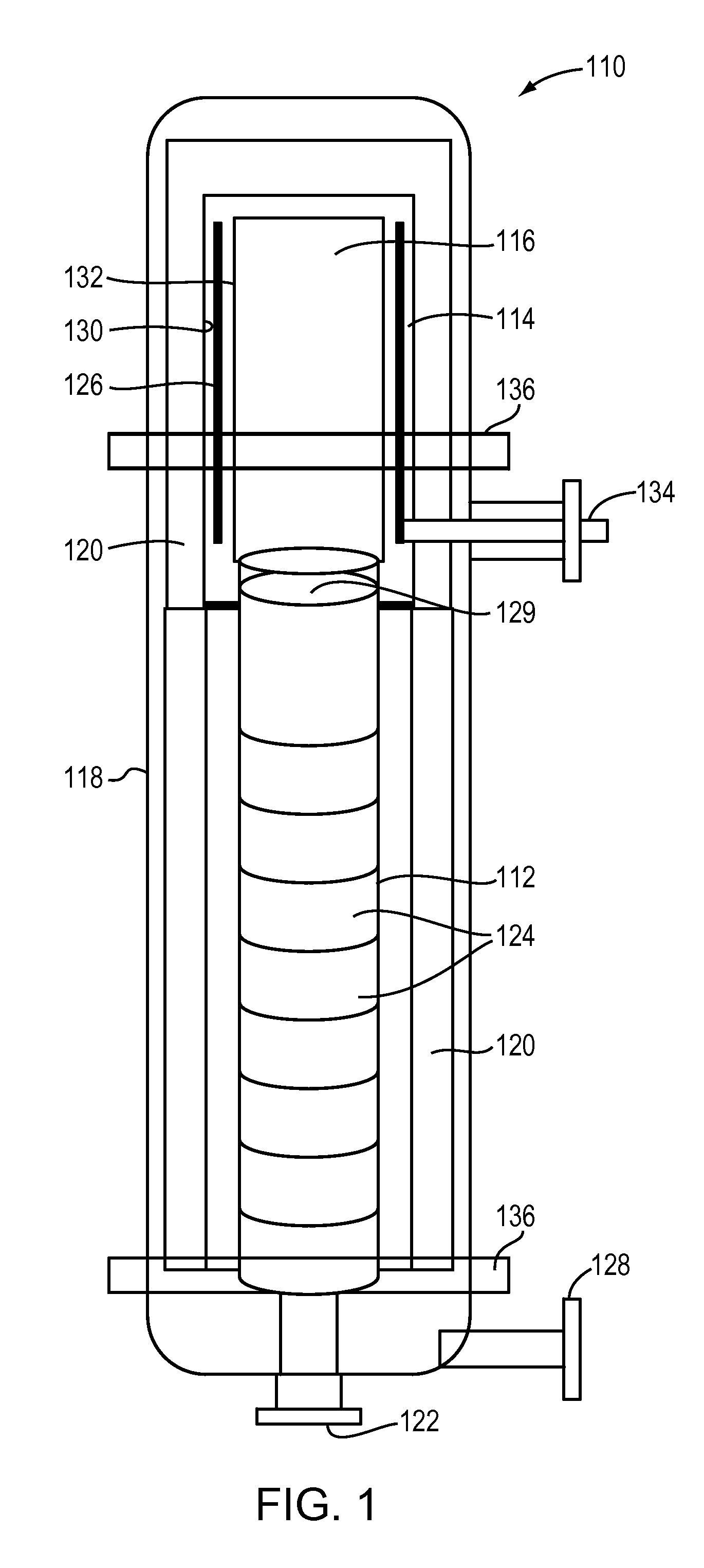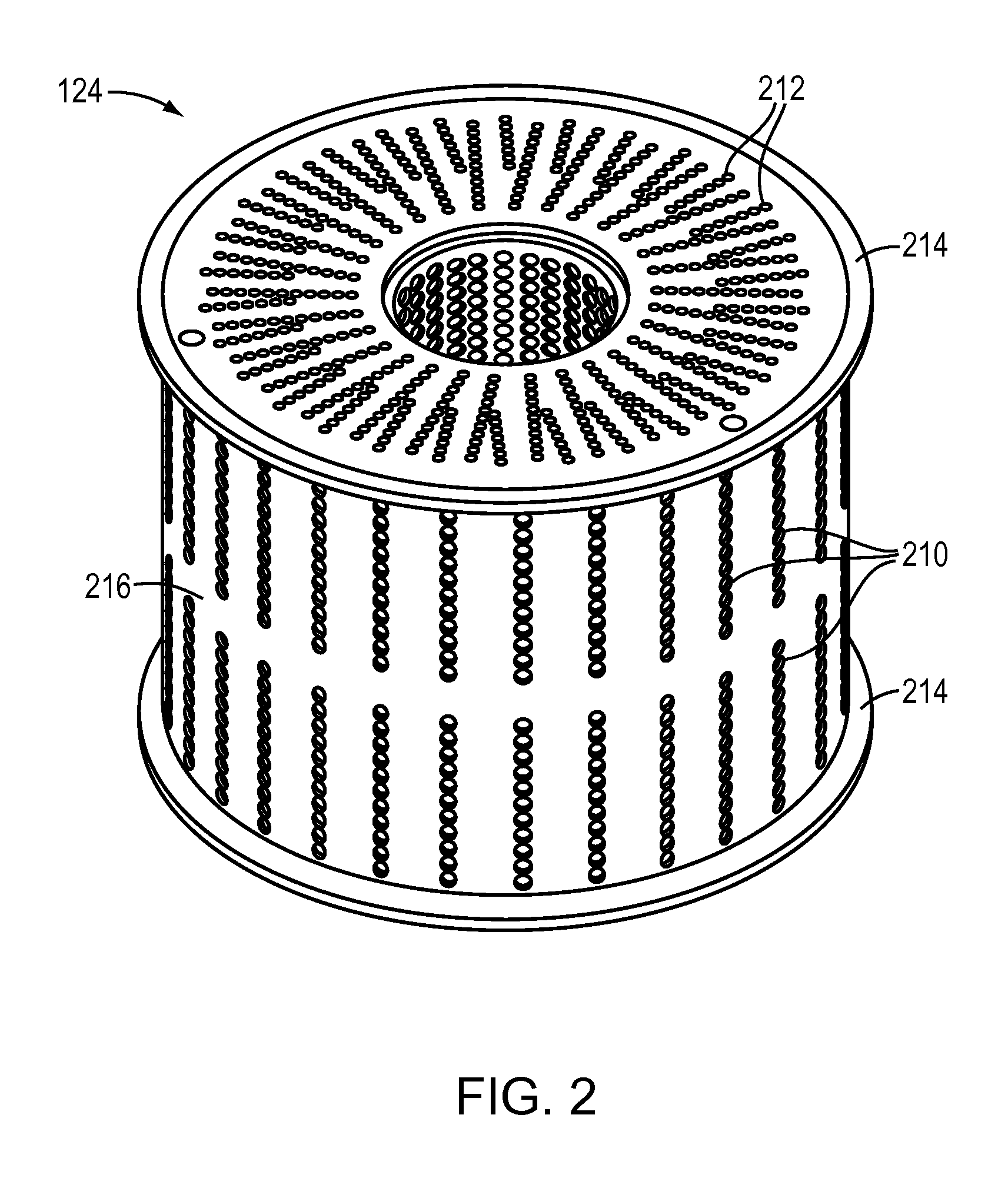Apparatus and Methods for Conversion of Silicon Tetrachloride to Trichlorosilane
a technology of apparatus and chlorosilane, which is applied in the direction of silicon compounds, lighting and heating apparatus, gas-gas reaction processes, etc., can solve the problems of large loss of primary raw materials tcs and disposal of byproducts stc, inconvenient addition of heat exchanger equipment for heat recovery, and heavy base pla
- Summary
- Abstract
- Description
- Claims
- Application Information
AI Technical Summary
Problems solved by technology
Method used
Image
Examples
constructive examples
[0081]Numerical modeling techniques were used to simulate the fluid flow and heat transfer within the converter 110. The computational fluid dynamics (CFD) software used for the simulations was ANSYS FLUENT, provided by Ansys, Inc., of Canonsburg, Pa. Input parameters and results for the simulations are provided in Table 1, below.
TABLE 1Input parameters and results for CFD simulations.Gen 2 converter characteristics from Fluent simulations:Input summaryGeometryDetails as available perdesignDivided upon commonsymetryDivided by exchanger blocksMesh sizeVaries by location with in geometryPhysical properties gasFrom DIPPRdatabasePhysical properites solidsPublished from VendorsPressurebarg622Flowkg / hr1930038300Mole ratioH2 / STC22Heat density of heater elementkw / mt356556112232.9InterchangerU overallw / mt2-K413700Hot gas outlet temperatureK10231023Pressure dropBarg1.31.4Heater sectionGas outlet TemperatureK12781280Heater average temperatureK14581565Heater maximum temperatureK15201625Heater m...
PUM
 Login to View More
Login to View More Abstract
Description
Claims
Application Information
 Login to View More
Login to View More - R&D
- Intellectual Property
- Life Sciences
- Materials
- Tech Scout
- Unparalleled Data Quality
- Higher Quality Content
- 60% Fewer Hallucinations
Browse by: Latest US Patents, China's latest patents, Technical Efficacy Thesaurus, Application Domain, Technology Topic, Popular Technical Reports.
© 2025 PatSnap. All rights reserved.Legal|Privacy policy|Modern Slavery Act Transparency Statement|Sitemap|About US| Contact US: help@patsnap.com



